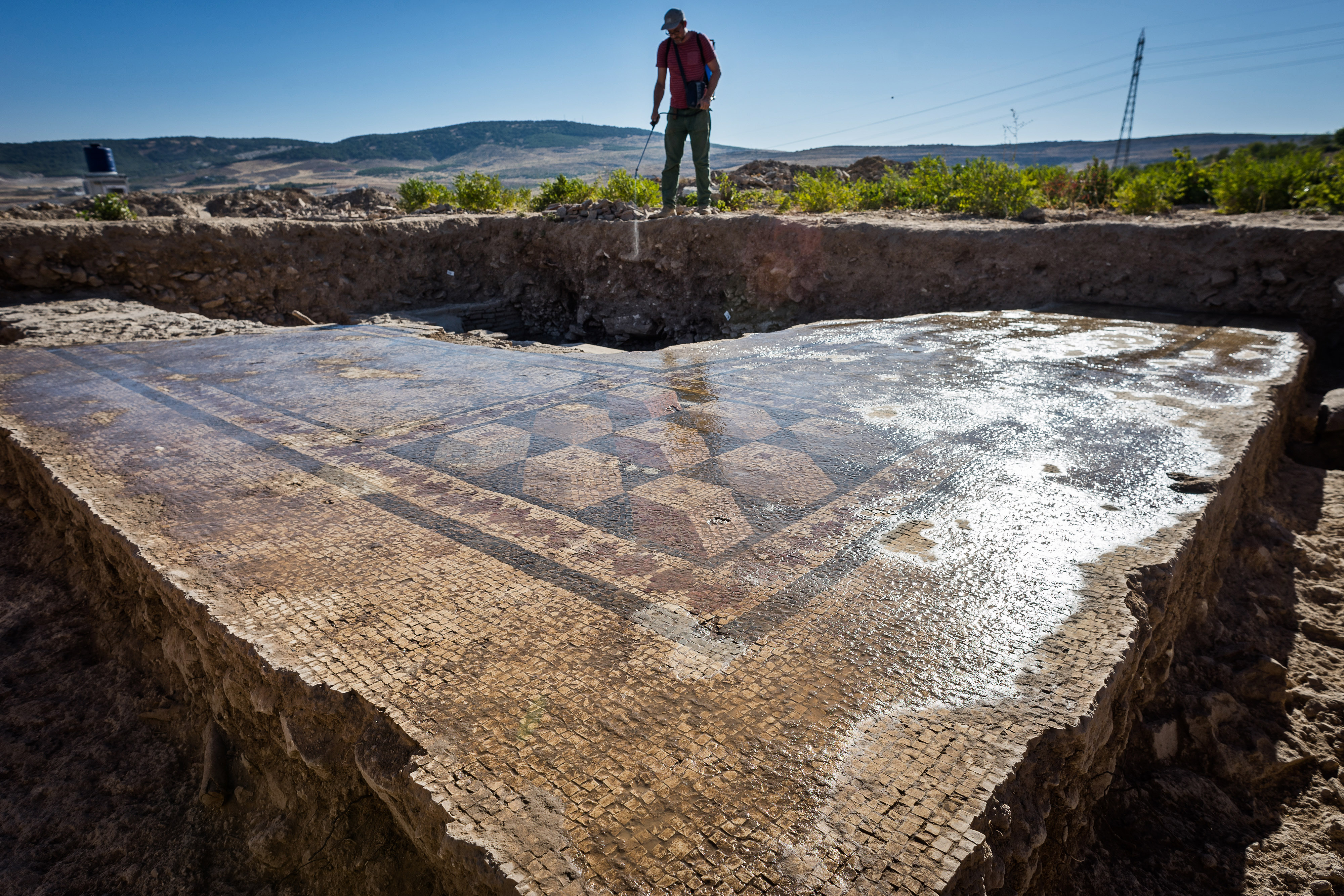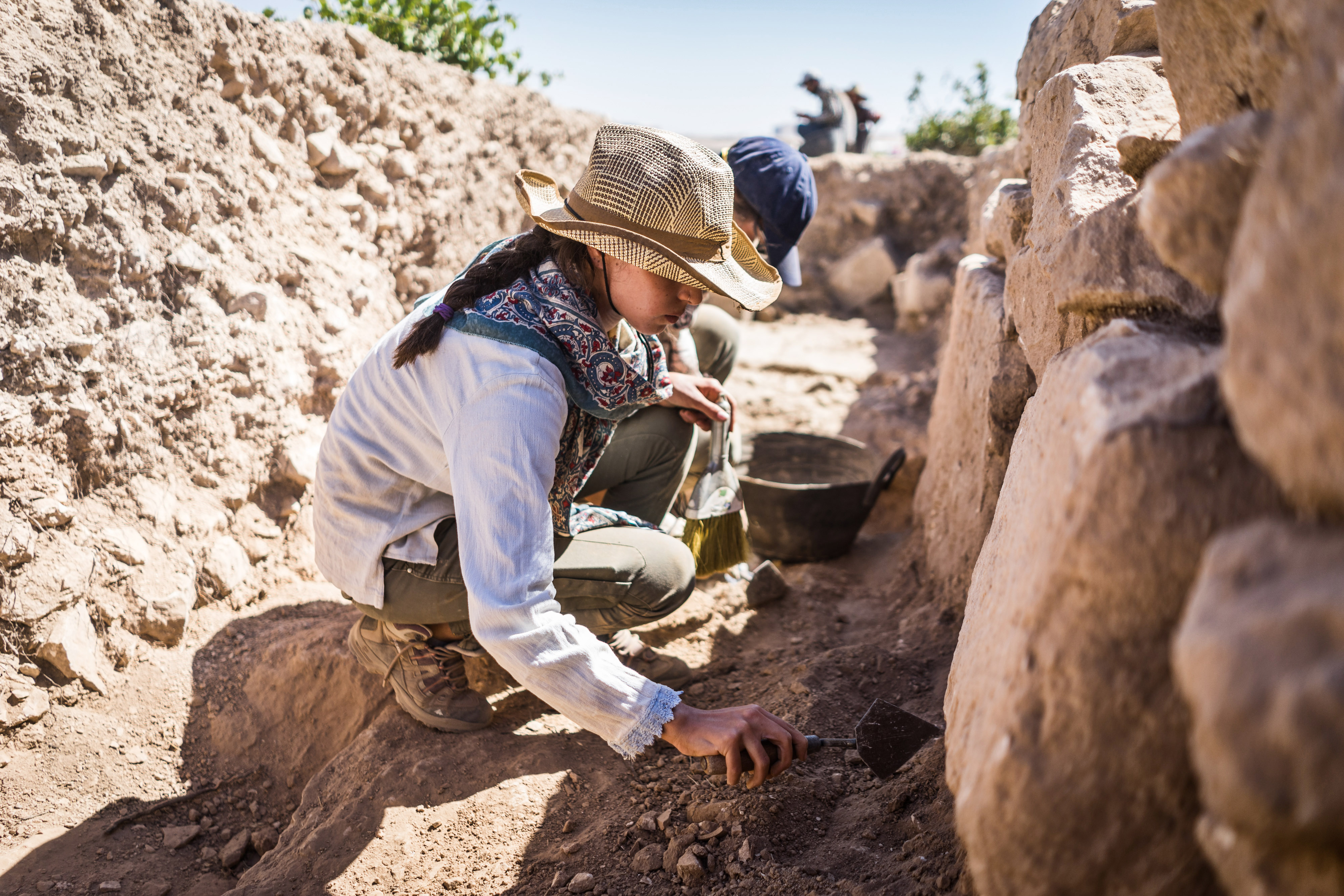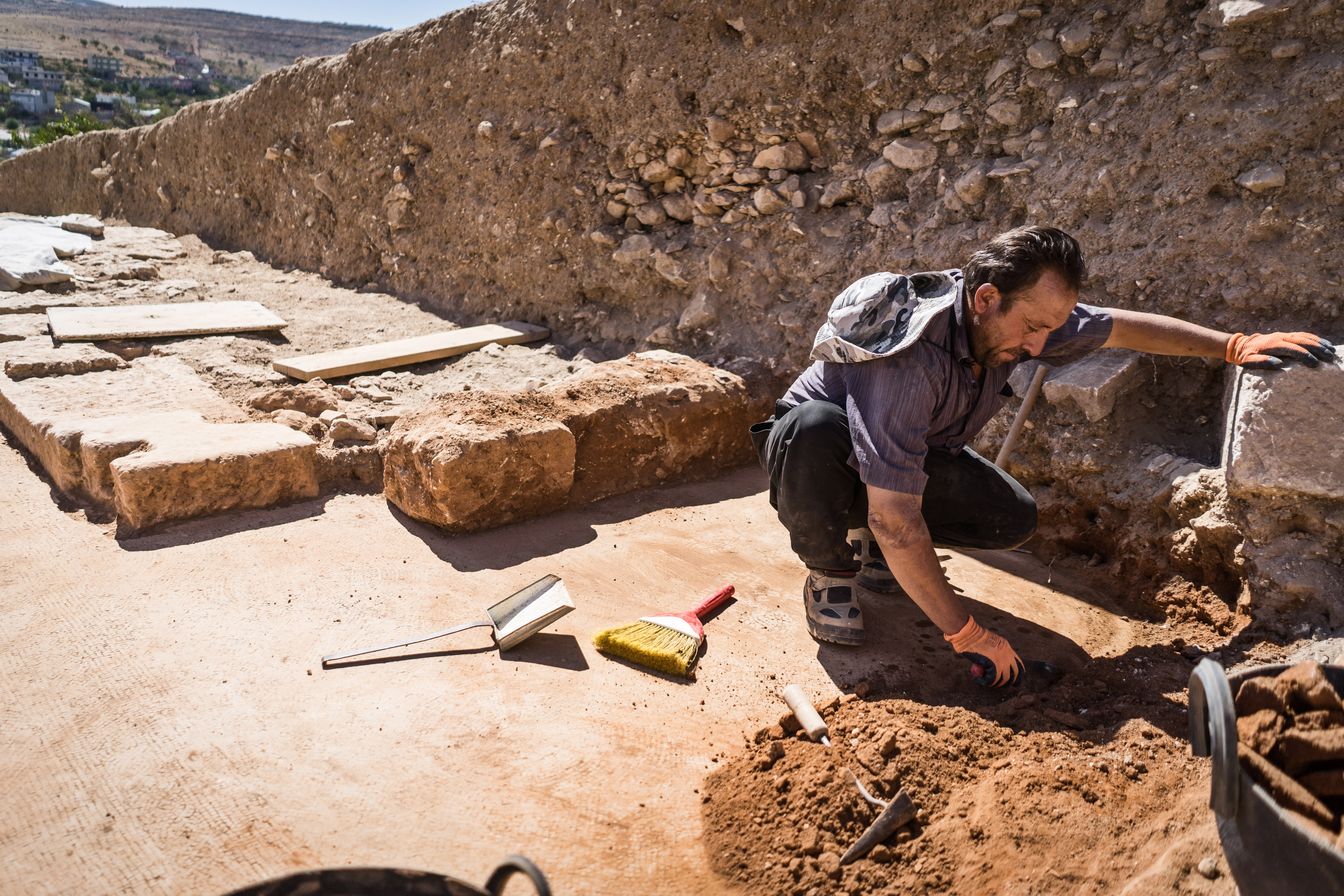From the Trenches: Excavating Doliche
Field report by Assistant Professor Michael Blömer.




Since the beginning of August, an international team of students and specialists from Germany, Denmark, Turkey, The Netherlands, Poland and Italy has been conducting archaeological research in Doliche, an ancient city in South East Turkey, close to the Syrian border. This groundbreaking project, funded by the German Research Council and closely affiliated with UrbNet, aims at a better understanding of ancient and early medieval urbanism in this region, which was part of Syria in antiquity.
The current season has three main targets. First, an intensive survey started to explore the site to get a better idea of the extent and the spatial organisation of the city. Roughly one third of the presumptive city area has been surveyed this year. The study of the collected material is still in its early stages, but the first preliminary results already indicate that the established narrative of the urban development of Doliche must be challenged. There is, for example, evidence of a sizable late Iron Age settlement which preceded the Hellenistic town. Moreover, evidence for an occupation of the site after the 9th century CE is lacking almost completely. This sharply contradicts the evidence of the literary sources which suggest the existence of a sizable fortress of the 10th to 12th century. The survey will be continued in the next years and will lay a new base for a detailed knowledge of the urban development of Doliche.
The second focus of research is on an early byzantine (5th–6th century CE) elite residential complex which was partly uncovered already in 2015 in the western part of the city. New trenches aim at the clearing of a large courtyard, which is surrounded by a colonnade and forms the centre of the building. So far, 70 m² of the court has been dug out. It is adorned with elaborate mosaics. Besides the courtyard, parts of adjacent rooms were excavated. Here, the careful investigation of a large, 7m-deep cistern, which was accidentally sealed at the moment of the final abandonment of the building complex, was of special importance. Large amounts of pottery, metal objects and coins, but also organic material have been retrieved from the cistern. The analysis of this material will be important for the chronology of the building itself but will also provide a rare opportunity to refine the chronology of locally produced pottery of early Byzantine/Early Islamic North Syria.
The third focus of this season is on the investigation of a large area in the eastern part of the city. Based on the results of the 2016 geophysical survey and stray finds, this area has been identified as part of the administrative and public centre of Doliche. Various test trenches have been dug, which were supposed to test the results of the geophysical survey. Among other things, a vast building complex which can be interpreted as a bath of the Roman Imperial period has been partly excavated. Since only few Roman bath complexes are known from Syria so far, this discovery is of great importance. Adjacent to the bath complex, we came across the foundations of a large Roman building which might belong to an administrative building. Several hundred seal impressions were found in fill layers. These finds indicate that the city archive of Doliche must have been located in the close vicinity. Moreover, the test trenches yielded valuable information on the initial occupation of this area. Remains of a large building made of rubble walls which is built on the bedrock can be dated to the 2nd century BCE. It is also noteworthy that all trenches yielded massive amounts of artefacts from the Neolithic period. All of them are without context, but they clearly indicate that the site was an important centre long before the city of Doliche came into being.
